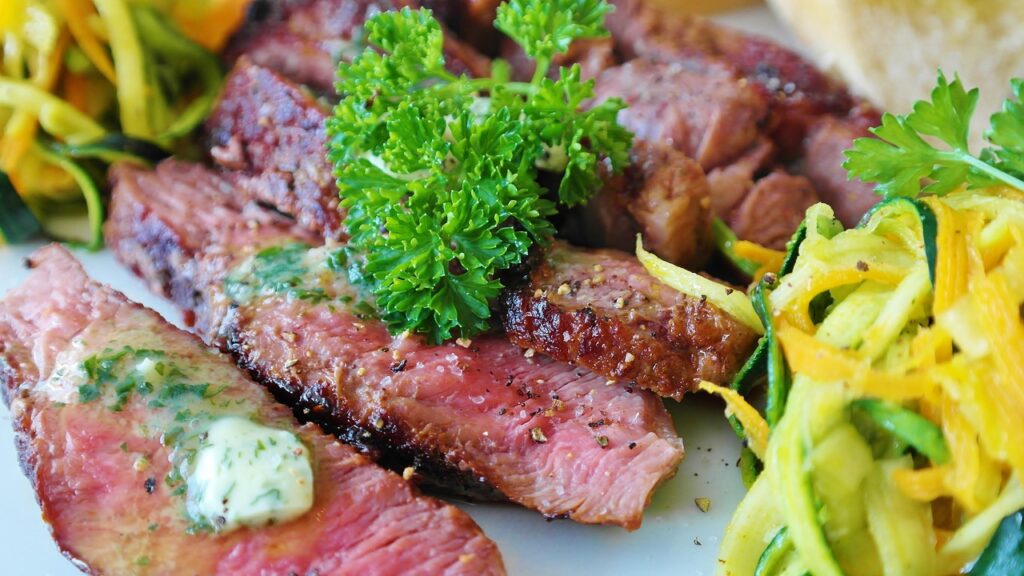Beef prices in the United States have climbed to historic highs, turning a kitchen-table concern into a political storm. Donald Trump, who once claimed inflation was “dead,” now faces growing outrage over the soaring cost of beef that threatens his promise to make groceries affordable again. This week, he called on ranchers via social media to cut cattle prices. But his appeal — and new plans from his administration — have angered ranchers who say his ideas could hurt their livelihoods while barely lowering prices for shoppers.
Shrinking herds and struggling ranchers
America’s cattle industry has been shrinking for decades. Domestic supplies keep falling, while consumer demand for beef remains strong. The national cattle herd is now at its smallest in nearly 75 years. Since 2017 alone, more than 150,000 cattle ranches have disappeared — a decline of 17%, according to the Agriculture Department.
Ranchers blame the concentration of power among a handful of giant meat processors. They say high costs for fertiliser, feed, and equipment make it nearly impossible to survive. Years of drought have also forced ranchers to reduce their herds dramatically.
In Illinois, rancher Christian Lovell says fields that were once lush are now dry and barren. “You put all these together and you have a recipe for a really broken market,” said Lovell, who works with the advocacy group Farm Action.
Inflation bites harder at the butcher counter
Beef prices are outpacing overall food inflation. Retail prices for ground beef jumped 12.9% in the past year, and beef steaks surged 16.6%, according to federal data. A pound of ground chuck now costs $6.33, up from $5.58 last year. In comparison, total food inflation stands at just 3.1%.
“The cattle herd has been shrinking for several years, yet people still want American beef,” said Brenda Boetel, an agricultural economics professor at the University of Wisconsin, River Falls.
Derrell Peel, from Oklahoma State University, said prices will likely stay high for years because rebuilding herds takes time. “The administration’s hands are tied,” he added, suggesting Trump has few tools to cool the market quickly.
Import plan sparks rural outrage
The Agriculture Department announced new efforts this week to boost domestic beef production. The plan includes opening more grazing land and supporting smaller meat processors. But Trump’s separate proposal to import more beef from Argentina — potentially four times more than current levels — has enraged many ranchers.
Eight Republican lawmakers sent a letter to the White House, warning that increased imports could devastate American producers. Even the National Cattlemen’s Beef Association, normally a Trump ally, criticised the idea. The group said it would “create chaos for cattle producers while doing nothing to lower prices for consumers.”
Trump defended his policy, pointing to tariffs that restrict imports from Brazil. “They have to get their prices down,” he wrote online. “The consumer is a very big factor in my thinking.” His words, however, did not calm the anger in farm country.
Justin Tupper, president of the US Cattlemen’s Association, warned that only large meat packers would profit from Trump’s import strategy. “I don’t see that lowering prices here at all,” he said.
Big meat companies under the microscope
Experts argue that the real problem lies in the tight grip of four corporations — Tyson, JBS, Cargill, and National Beef — which control over 80% of the beef processing market.
“These are consolidated markets gouging ranchers and gouging consumers,” said Austin Frerick, an antitrust expert at Yale University.
The companies have faced multiple lawsuits, including one filed by McDonald’s accusing them of colluding to raise beef prices. Earlier this year, Trump reversed a Biden-era rule that targeted corporate consolidation in food production. Still, his administration has launched new investigations into market competition in agriculture.
Small ranchers see no future
In Kansas, rancher Mike Callicrate has survived by cutting out middlemen and selling beef directly to customers. But he says most ranchers lack the money to follow his path. Many have already left the industry and see little reason to return.
“We’re not going to rebuild this cow herd — not until we address market concentration,” Callicrate said. He supports plans to expand grazing land but warned, “Without a fair market, you’re a fool to get into the cattle business.”
Bill Bullard, who heads the trade group R-CALF USA, shut down his 300-cow ranch in 1985 when meat processing started consolidating. He said only recently have ranchers seen decent prices, driven by a supply shortage that forced meat packers to pay more.
Still, Bullard said big processors and import dependence continue to dominate the market. “Ranchers lack confidence in the integrity of the system,” he said. “Trump is focused on the symptoms, not the problems.”
As beef prices soar and family ranches vanish, Trump faces mounting pressure to deliver on his promises. The fight over America’s beef supply may prove to be one of the toughest tests of his presidency.


